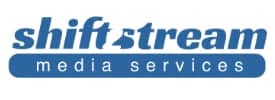- About
- Members
- Sponsors
- Subcommittees
- Technical Documents
- News
- Events
- Spotlight ATSC 3.0
- Contact Us
- Member Login
- Member Meetings
- Advanced Search
Search Site
Member Links
- About
- Members
- Sponsors
- Subcommittees
- Technical Documents
- News
- Events
- Spotlight ATSC 3.0
- Contact Us
- Member Login
- Member Meetings
- Advanced Search
AND NOW A WORD FROM OUR SPONSOR: Hewlett Packard Enterprise (HPE)
Posted on March 17, 2022 in ATSC News
Hewlett Packard Enterprise (HPE) is enabling broadcasters to transform and transition to ATSC3.0. We have your solutions needs covered to ready your station network and launch new services. The solutions discussed here are carrier-grade and deployed around the globe with large Telcos, Broadcasters and Media companies. We are facilitating several key ATSC 3.0 POC’s to meet enterprise needs for data delivery including an ISP and Cable Operator for offload of non-revenue generating traffic, Global Logistics provider to deliver map and route updates to their fleet of trucks where they do not have connectivity today and firmware updates for the Gaming industry. HPE is bringing Broadcasters and Enterprise together with the vision and solutions necessary to realize the power of ATSC 3.0 for data transmission.
HPE supports broadcasters on your journey to transition to ATSC 3.0, including shifting to a virtualized broadcasting environment and transformation of your infrastructure. Our automation and orchestration solutions help you move quickly and easily from a physical environment into a cloud-based, virtualized environment.
HPE Virtual Headend Manager Solution (vHM) and HPE Service Director provide end-to-end service management that makes it possible to automate and orchestrate services from the edge to the core. Broadcasters can deploy, manage, and monitor multicast, unicast TV channels in a multi-vendor environment from a single interface.
HPE vHM provides the virtualization and orchestration of the media functions that enable one-click channel deployment and channel failover in the cloud; it implements the “TV Channel Media Service” of HPE Core Network Reference Architecture. This helps content providers reduce time to market for new services, increase operational efficiency, and reduce cost.
HPE Service Director brings cloud application intelligence (which today lives mostly in centralized data centers) closer to the point where services are consumed. You can now deliver a variety of Edge orchestration, which makes it possible to dynamically and automatically allocate and release spectrum and broadcast system resources in a virtualized, cloud-based environment. The system further facilitates a leased spectrum scenario which monetizes excess broadcasting spectrum capacity by leasing these bits to other entities who will use them to deliver their own content, data, or even internet services.
Want to know more? Contact Denise Willsey at denise.willsey@hpe.com.
Posted in ATSC News
News Categories
News Archives
Subscribe
Subscribe to The Standard, our monthly newsletter. Learn More
Join ATSC
ATSC is a membership organization with both voting and observer categories. Voting members include corporations, nonprofit organizations, and government entities, and they participate actively in the work of ATSC. Observers are individuals or entities not eligible to be a voting member.
Subscribe to our Newsletter
Subscribe to The Standard, our monthly newsletter, to stay up-to-date with ATSC news and events around the world.
Site Links
Contact Us
Advanced Television Systems Committee, Inc.
1300 I Street NW, Suite 400E
Washington, DC 20005
Do you have questions about ATSC?
About ATSC
The Advanced Television Systems Committee, Inc., is an international, non-profit organization developing voluntary standards and recommended practices for digital terrestrial broadcasting. ATSC member organizations represent the broadcast, broadcast equipment, motion picture, consumer electronics, computer, cable, satellite, and semiconductor industries. ATSC also develops digital terrestrial broadcasting implementation strategies and supports educational activities on ATSC standards.
© 2025 ATSC








































